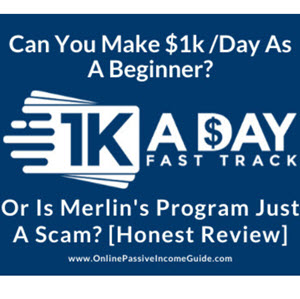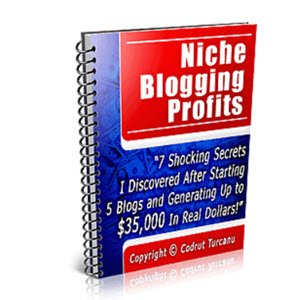Your Blog RSS Feed and Email Mailing List
Most of you already maintain a blog for posting news about software releases and development updates. And if you don't, then you really should! It's a great way to grow a readership, drawing users to your site. Don't have much to say? That's OK, because you don't have to utilize it like a daily journal. A blog establishes a direct connection between you and your customers, where readers can stay on top of your latest news and post comments. For those of you new to blogs, I'll be discussing the community-building power of blogs later in this chapter.
For now, if you do maintain a blog for discussing software development or iPhone news, just make sure that your app-related web site includes a direct link to it. Beyond Twitter and Facebook, you want site visitors to know that your blog is yet one more available resource for staying informed about your iPhone app.
Since most blog software, such as WordPress, automatically generates RSS feeds for the latest blog entries, many bloggers aren't placing much emphasis on their feed beyond offering the obligatory link for interested subscribers. Although hot new platforms like Twitter have seemingly cooled the popularity of this XML-based standard, RSS is still a very powerful mechanism for distributing information. To really leverage RSS for your own marketing needs, I highly recommend signing up for Google's free FeedBurner service.
■ Google FeedBurner: http://www.feedburner.com/
At first glance, FeedBurner may only appear to be a glorified analytics service, tracking who's subscribing to your RSS feed and which browsers or client apps are being used to read it. Although RSS statistics monitoring is very useful, FeedBurner is really so much more than that. One of the included features is FeedFlare, which inserts social media links within your feed so that with a single click, RSS subscribers can actually share individual posts on Digg, Delicious, Facebook, and other social networking sites. On top of that, FeedBurner will automatically send ping notifications to all major feed aggregators and search engines when you've posted a new blog entry. The service also provides JavaScript widgets for easily publishing feed content in HTML form on any web site, which is perfect for third-party sites interested in syndicating your blog content without the hassles of parsing XML. Although some bloggers may be wary of who repurposes their content, you're using your blog and RSS feed to market your iPhone app, so the more locations your feed is syndicated, the more exposure your iPhone app receives. It's a win-win for you since your primary goal is to drive as much traffic as possible to your product page in the App Store.
But the most valuable feature by far is FeedBurner's free Email Subscriptions service. This enables your site visitors to receive your blog posts via email. Think about that for a moment. Instead of installing and maintaining complicated mailing list software on your own server for managing subscribers and sending out broadcast emails, FeedBurner does all of that for you. And you don't even have to waste time configuring a SQL database and constructing email templates. Just post a blog entry. It gets added to your RSS feed, which in turn gets sent out via email to your email subscribers. And did I already mention it's free? You can even customize the emails with your own logo and font styles. And with the simple copy-and-paste Email Subscription HTML form code that FeedBurner provides, people can easily subscribe from within your own web site.
But what if you don't want every single blog post to be sent out to your mailing list? What if you need more control over the design of the emails? And how about importing existing mailing lists from previous marketing campaigns? To solve those needs, you'll need a more robust email marketing solution. If you're like me, you may not want to be bothered with monkeying with your own mailing list software and the maintenance headaches to come with aggressive spam filters, SQL database security to keep out hackers, and other time-consuming nuisances. Fortunately, some easy-to-use yet affordable third-party email marketing services can take care of all the heavy lifting. They maintain your mailing list databases and email campaigns on their secure servers, support custom HTML emails, list imports and exports, provide extensive web-based admin sites with comprehensive analytics reports for each campaign, and even produce custom HTML form code for you to copy and paste into your own web site for visitors to easily subscribe. These services have "whitelist" agreements with the major ISPs and email vendors to help prevent your campaigns from getting eaten by server-side spam filters—this alone makes these third-party services a better option than installing your own PHP/MySQL solution. Hundreds of email marketing companies exist, but here's a select group that have proven popular with software developers:
■ Campaign Monitor: http://www.campaignmonitor.com/
■ MailChimp: http://www.mailchimp.com/
■ Constant Contact: http://www.constantcontact.com/
■ iContact: http://www.icontact.com/
■ StreamSend: http://www.streamsend.com/
■ Vertical Response: http://www.verticalresponse.com/
I've had the most experience with Campaign Monitor, which offers complete design control over the look and feel of your email blasts. The thing I like best about Campaign Monitor is that you only pay per email campaign. There's no monthly fee, so if I don't send out an email campaign this month, then I pay nothing. And then when I do send out a campaign, their rate is very affordable. This is a great solution for developers with large mailing lists who send out very few emails.
If your mailing list has fewer than 500 subscribers, then MailChimp offers its service free for low-volume accounts with the ability to upgrade to larger-capacity plans as your subscriber base grows. If you have a large mailing list with high-volume email needs, then a flat monthly fee from some of the other listed companies may be your best bet.
Whether you choose the free FeedBurner Email Subscriptions or a more comprehensive email marketing solution, let your site visitors know that unsubscribe links are located at the bottom of every email newsletter for their convenience. It's also important to include a link to a privacy policy somewhere on your web site. People are tired of dealing with spam, so they've become very wary of giving out their email address to anyone. A simple privacy policy statement can reassure site visitors that you won't be selling or sharing their email addresses with anyone. Not sure how to word it? Perform an online search for privacy policy, and you'll find hundreds of samples to refer to. Just be sure to adhere to whatever privacy policy you set to avoid liability issues. Beyond the fact that most countries now have strict antispam laws in effect, the wrath of negative word-of-mouth from angry subscribers can be even more damaging to your business.
Why bother with email newsletters at all if it's so troublesome? With overly aggressive spam filters, is it still an effective delivery mechanism? True, a fair percentage of your recipients may never see your emails because of hungry junk mail filters, but email is still a very powerful pipeline to communicate news. Although you may be tempted to only post announcements on Twitter, Facebook, or your blog, you're reliant on users to follow you there and religiously monitor your latest news. That places the responsibility on your audience, and although you may be vigilant about reading every tweet and Facebook update, most people are not. Why risk the possibility of your important posts being overlooked? There are still a lot of consumers who prefer a more passive approach where requested information is delivered directly to them, rather than being forced to go find it for themselves. It's all about providing as many communications options as possible on your web site so that anyone interested in your iPhone app can receive related news in the format or platform of their choice.
Continue reading here: Using Promotions and Giveaways to Improve App Discovery
Was this article helpful?


